小型无人机建模系统架构
概述
此示例展示如何使用 System Composer™ 设置小型无人机的架构,由六个顶层组件组成。了解如何通过创作界面、检查链接的文本需求、定义配置文件和原型以及对这样的架构模型运行静态分析来完善您的架构设计。
openProject("scExampleSmallUAV");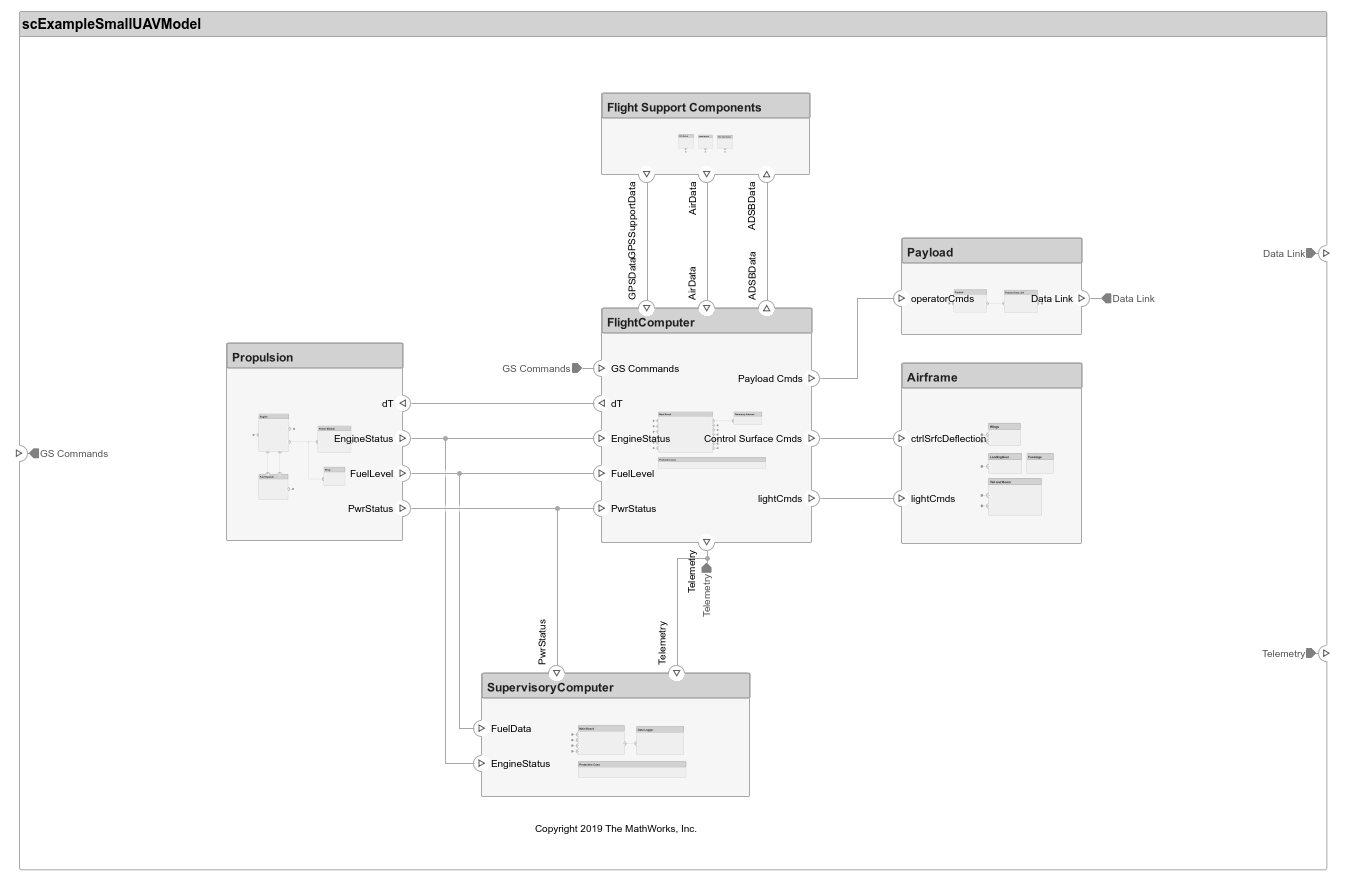
每个顶级组件被分解为其子组件。浏览层次结构来查看每个组件的组成。根组件 scExampleSmallUAVModel 具有输入和输出端口,代表系统与其环境之间的数据交换。
编写接口
定义连接之间特定于域的数据接口。通过接口元素属性值定义的两个端口之间共享的信息进一步增强了规范。要打开 接口编辑器,请在工具栏的建模选项卡中,点击接口编辑器。
点击架构模型上的 GS Commands 端口以突出显示 architecture_gsCommands 接口并指示该接口的分配。
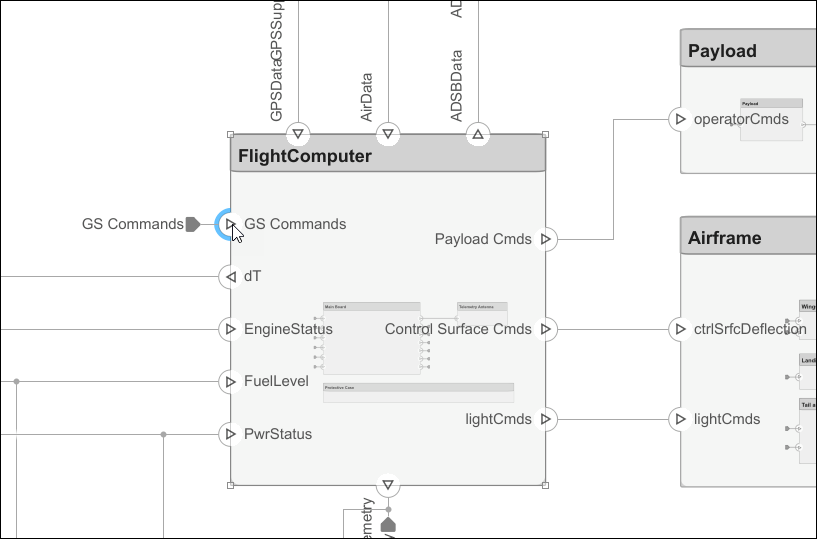
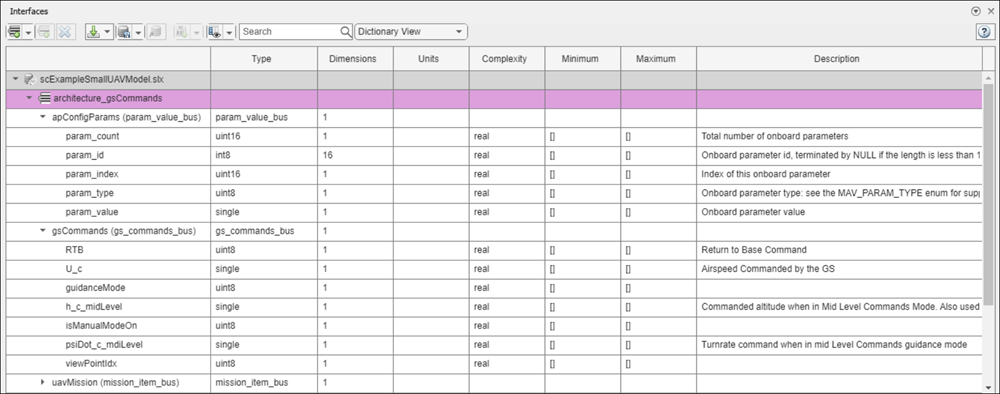
检查需求
需要 Requirements Toolbox™ 许可证来检查 System Composer 架构模型中的需求。
架构模型中的组件与 scExampleSmallUAVModel.slreqx 中定义的系统需求相链接。打开 需求管理器 (Requirements Toolbox)。在模型窗格的右下角,点击显示透视视图。然后,点击需求。
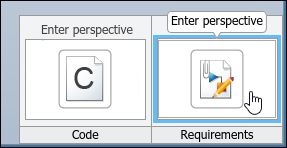
选择模型上的组件来查看它们所链接的需求,或者相反,选择需求视图中的项来查看哪些组件实现了它们。需求还可以链接到连接器或端口,以实现整个设计工件的可追溯性。要编辑 smallUAVReqs.slreqx 中的需求,请从菜单中选择需求编辑器 (Requirements Toolbox)。
Carrying Capacity 需求强调了飞机能够承载的总重量。此需求与飞机的重量一起,是为早期验证和确认而进行的质量累积分析的一部分。
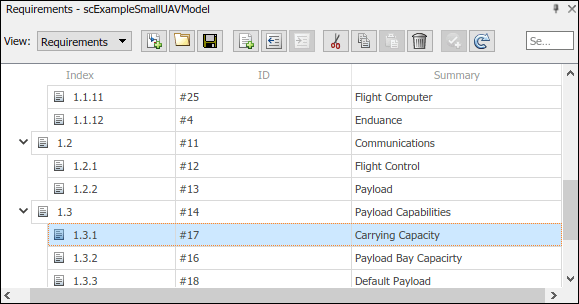
定义概况和原型
为了完成规范并在设计过程的后期进行分析,原型会向架构模型元素添加自定义元数据。该模型针对以下元素具有原型:
板载元件,适用于组件
RF 连接器,适用于端口
RF 配线,适用于连接器
原型是使用配置文件在 XML 文件中定义的。配置文件 UAVComponent.xml 已附加到此模型。使用配置文件编辑器编辑配置文件。在建模选项卡上,点击配置文件编辑器。
显示内容如下所示。
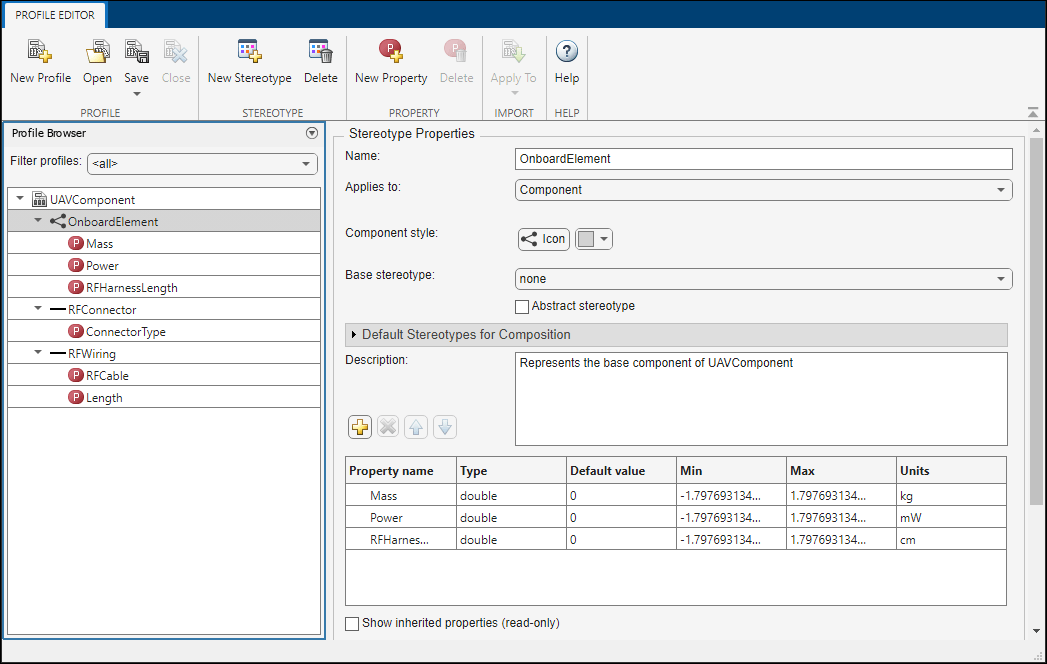
分析模型
要在您的系统上运行静态分析,请从架构模型创建一个分析模型。分析模型是从架构模型元素生成的实例树,其中所有引用的模型都被展平,并且所有变体都已解析。
要打开 实例化架构模型 工具,请点击视图菜单上的分析模型。
对此模型进行大规模汇总。在对话框中,选择您想要包含在分析中的原型。通过浏览 utilities/massRollUp.m 来选择分析函数。设置模型迭代模式为自下而上。
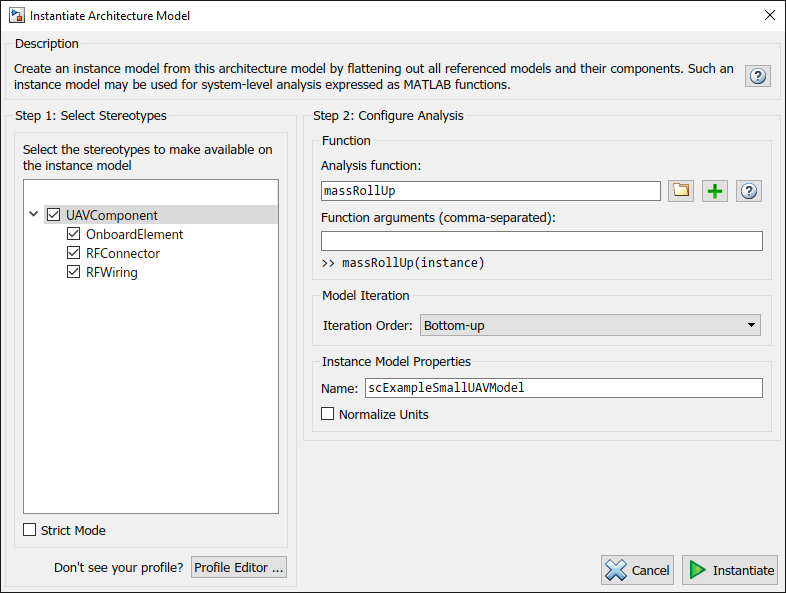
取消选中 Strict Mode,以便所有组件都可以实例化 Mass 属性,以方便计算总质量。点击实例化以生成分析。
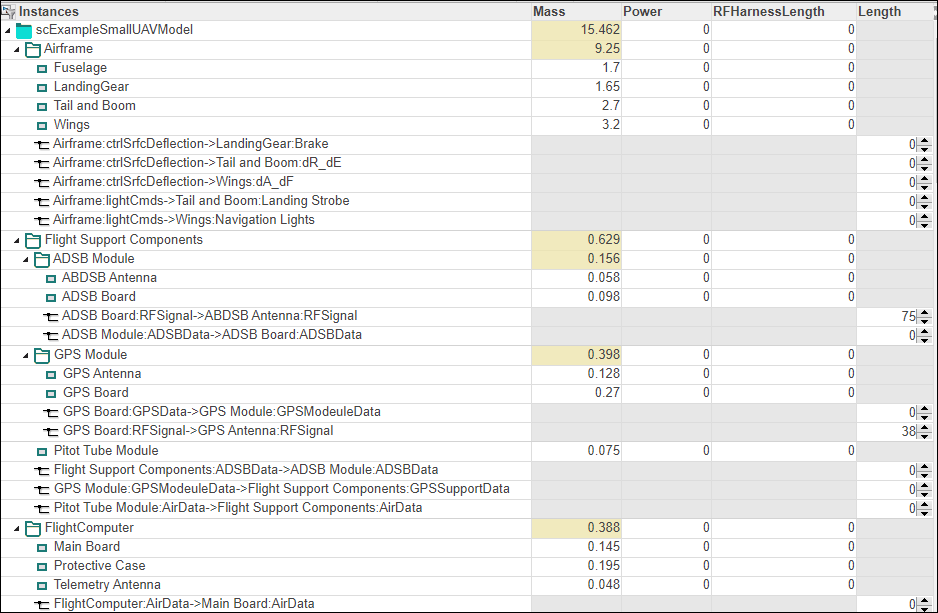
进入分析查看器界面后,点击分析。分析函数自下而上迭代模型元素,将每个组件的 Mass 属性分配为其子组件的 Mass 属性的总和。系统的整体权重被分配给顶级组件 Mass 的 scExampleSmallUAVModel 属性。
另请参阅
setInterface | createProfile | addStereotype | addProperty | applyStereotype | instantiate